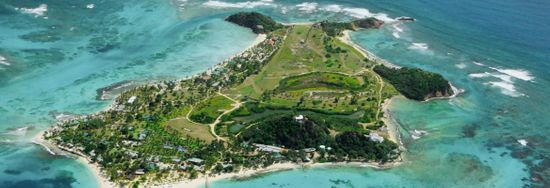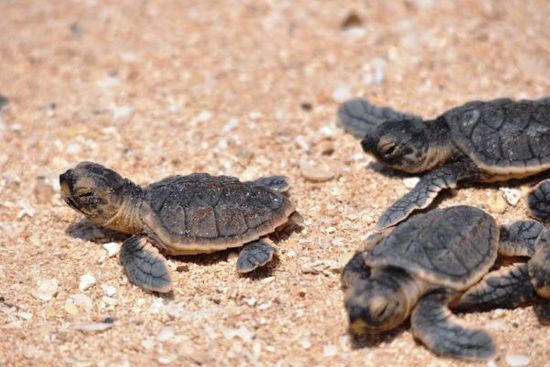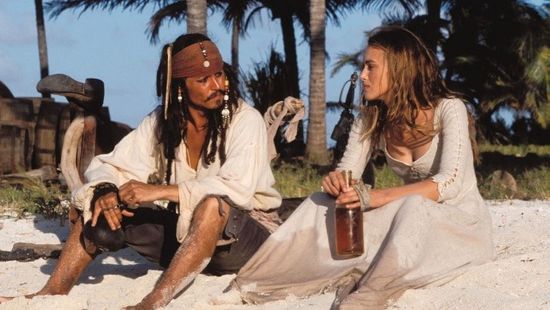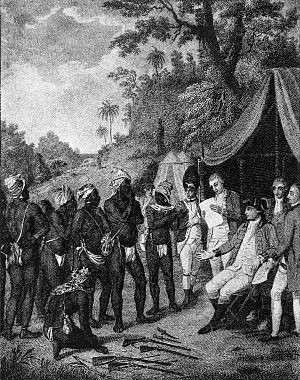St. Vincent and the Grenadines

Need to broaden the cruising horizons? Look no further than the Eastern Caribbean, where a string of gem-like islands extends between St. Vincent and Grenada. Technically a part of the same country as the island of St. Vincent, the Grenadines stretch along 40 miles (64.37 km) in a northeast-southwest direction and although that doesn’t sound like much territory to cover on a week-long charter, cruisers may find themselves planning their next visit even before the boat is back in its slip. Learn all about these intriguing islands here.
The better-known destinations of the Grenadines include Bequia, Mustique, Canouan, Tobago Cays, Mayreau and Union islands, but there are dozens of islets in between with one-boat-sized anchorages where cruisers can drop the hook for a week and set about redefining civilization.

The Lay of the Land
St. Vincent is a lush island and a convenient start to a charter in the Grenadines. Because it, and all its smaller islands to the south, are one country, there is only one customs/immigration check-in, and that means less bureaucracy and more cruising time. There are reputable charter companies at the Blue Lagoon on the island’s southern tip, which is a perfect launch pad. Alternatively, boaters can charter in Grenada with The Moorings and although that may mean a bumpy ride north to start, it’s a nice beam reach back down.

St. Vincent is more than a point of departure. We visited the old fort and took a guided tour of the botanical garden with its exotic plants and the St. Vincent parrot whose blue, green and yellow plumage was the inspiration for the country’s flag. Hire a guide to make the most of the tour.

An easy two-hour sail south from St. Vincent brought us to beautiful Bequia, the largest and northern-most of the Grenadines. The two things cruisers notice immediately upon arrival is that they’ve probably been pronouncing the name wrong (it’s BEK-way) and that the friendliness of Bequia’s English-speaking population that will make visitors feel immediately welcome.

Bequia’s Admiralty Bay provides lots of easy anchoring and moorings off the beach of Port Elizabeth. Here we had our first encounter with the “boat boy” culture where men and women come out in their small boats to assist with everything from hooking up to a mooring ball, to delivering fresh baked goods, to hauling away trash. They’re quintessential entrepreneurs so if boaters take care of them, they are glad to offer their services.
A taxi ride to the windward side will introduce visitors to Orton “Brother” King who has spent the last 17 years on Bequia tending Hawksbill turtles. He rears hatchlings at his farm until they’re old enough to survive on their own at age three. This passionate man happily walked us through the many pools of turtles of all ages and filled us in on turtle facts. Who knew that they can live to be 200 years old and don’t really mature until age 25, and that a turtle clearly enjoys a good back scratching and will happily splash about for as long as guests care to do the scratching?

From Bequia it is an easy 24-mile sail to Horseshoe Reef which surrounds the Tobago Cays and protects the group of four small deserted islands. Because the Tobago Cays were designated a Marine National Park in 1998, rangers visit boats and ask for $10 EC (Eastern Caribbean dollar which is about 40 cents US) per person per day which seems like a fair price to keep help with the upkeep of the place.
Once in this remote paradise, it’s time to do everything and, at the same time, nothing. There are few distractions here and no nightlife, so the Cays are about bringing snorkeling gear, a couple of books and a cooler of beer, and forgetting the world for a while. The snorkeling is sublime, and the reef provides mostly protected water. Swim with turtles as they feed on the grass only eight to 10’ (2.4 – 3.0 m) below the surface and even hear them chewing.
Enterprising locals come by in the early morning to bring croissants, handicrafts and jewelry or organize a beach picnic that may be the highlight of the trip. Grilled fish, rice, vegetables and rum punch are served in hearty portions but be sure to bring bug spray.

Exit the southern cut from the Cays and head for Union Island, a scant three miles away. The highest peak, Mt. Parnassus, is nearly 900' (274.32 m) high so it’s hard to miss. The main town of Clifton provides great shopping with an open-air produce market and several grocery stores including one that sells gourmet coffee, chocolate and bread. A sundowner at Janti’s Happy Island is not to be missed. It can only be reached via dinghy because it was built on the reef out of thousands of conch shells gathered by Janti, the owner. When would we have another chance to find ourselves on an island created entirely by an enterprising local?
In strong trades, take shelter in Chatham Bay on the western side of the island. This large bay with a long beach has many shack restaurants including Shark Attack that advertised “Finger Licking Good Food.” Who could resist?
History
Although each island is spectacular in its own right, when taken together and put in context, their unique character really comes to life. A brief version of the region’s history goes like this: When Columbus plied Caribbean waters, St. Vincent was known by its inhabitants as Hairoun, which means “home of the blessed,” and today is also a brand of a popular local beer. Over the centuries, the Eastern Caribbean was settled by various groups like the Arawak Indians who mostly originated in South America and were peaceful. Eventually however, they didn’t fare well against the new group of warlike Caribs who subsequently moved in, killed the men, kept the women and castrated and fattened some of the children for future banquets. Sounds gruesome, doesn’t it?

Two hundred years after Columbus, Europeans came en masse to settle and embed missionaries who often didn’t stand a chance against the Caribs but were unbelievably persistent. Slave ships from Africa soon followed and some of them wrecked on the nearby reefs. Surviving Africans swam ashore, mixed with the Caribs and created a new group called Black Caribs who, of course, didn’t get along with the original Yellow Caribs.
By this time the French and British were also waging half-hearted battles over the territory as well as fighting with the Caribs who were fighting each other. The superior technology of the day, like cannons, muskets and ships, prevailed and the Black Caribs were eventually rounded up and shipped to Roatan off the coast of Honduras. St. Vincent, which spent much of its time under French rule, then became a part of the British colony of the Windward Islands in 1871. In 1979, it became an independent state within the British Commonwealth.
Clearly, there are a few parts missing in the telling of this story, but locals can fill in some colorful versions of the lore when the crew books a land tour where the guides are sometimes knowledgeable, and at other times imaginative, as they recount their proud heritage.
The Grenadines differ from one another like multi-faceted diamonds, but each is post-card perfect, which is why once is not enough when visiting these islands. Boaters will soon be setting a course back for repeat a charter whether it’s to sip a Hairoun beer, enjoy a beach barbecue or even scratch a happy turtle’s back.
Sidebar
Best Time to Visit & Getting There
Pretty much any time is a good time to be in the Grenadines since temperatures range from the 70s F in winter to 90s in the summer and the tradewinds blow a refreshing breeze (10-25 knots) most any time. The chain is approximately at 13° 17’ north latitude and 61° 8’ west longitude which makes it technically still in the hurricane belt. That means that July thru October will probably be best left off the itinerary.
Want to coordinate with local events? Consider the Bequia Mount Gay Music Fest, which is usually at the end of January and slightly overlaps the Mustique Blues Festival – allowing visitors to catch both on different days in one week. For the sports-minded, Bequia’s Easter Regatta is a four-day spectacle that includes the Heineken Around the Island single-handed yacht race.
Scheduled flights to St. Vincent are available from Puerto Rico, Barbados, Martinique, Grenada and Trinidad. Sunsail and Barefoot Offshore Sailing School offer bareboats at the Blue Lagoon, outside of Kingstown at the southern tip. The Moorings also has a facility in St. George in Grenada which will require a separate country check-in.